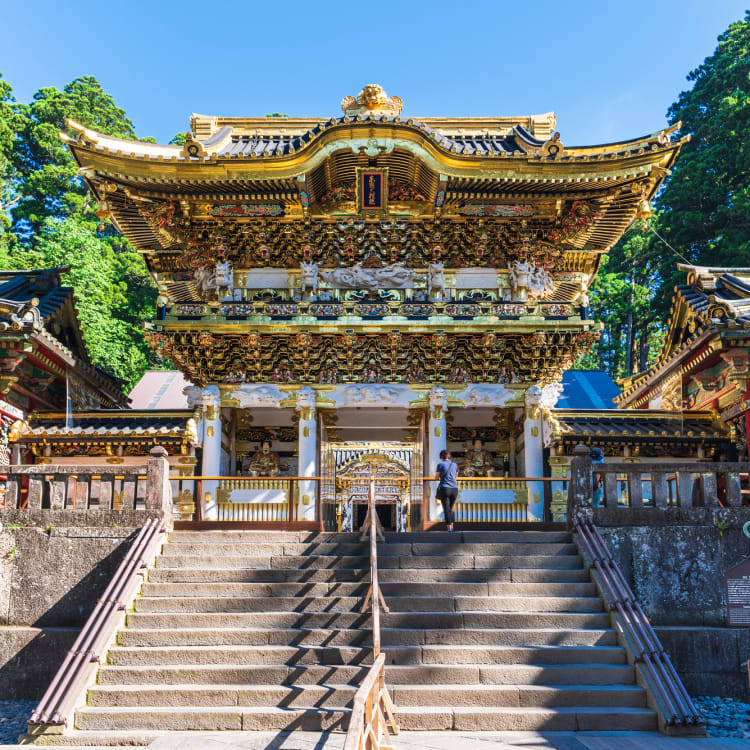
Story
A magnificent memorial to a famous warlord
The Divine Nikko Toshogu
By JNTO On 15 December 2021
Tochigi Prefecture is the home to Nikko Toshogu Shrine, a UNESCO World Heritage site that enshrines Japan’s most famous samurai leader, Tokugawa Ieyasu. Set in a beautiful forest, the sprawling temple consists of more than a dozen buildings ornately decorated with gold leaves.
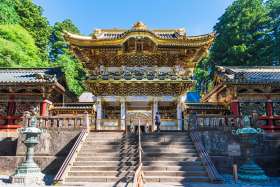
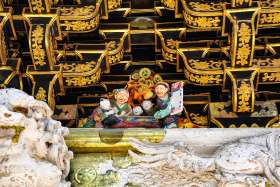
Nikko Toshogu is more than just a complex of temples designed as a magnificent memorial to the late warlord. Across Japan, Shinto and Buddhist temples are usually two separate entities, but Toshogu is unique that it contains both elements, as the two religions were so intermingled that the separation was not carried out completely.
Dedicated to the great shogun deity
The sprawling temple complex was originally a simple mausoleum dedicated to Tokugawa Ieyasu who ruled Japan for over 250 years until 1868 as the founder of the Tokugawa Shogunate. It expanded into the complex you see today with the work of Ieyasu’s grandson Iemitsu in the 17th century.
The era of Tokugawa Ieyasu marked the beginning of the peaceful and prosperous Edo period (1603-1867) after a long history of civil war. He also elevated the merchant city of Edo into the megalopolis of Tokyo that we know today.
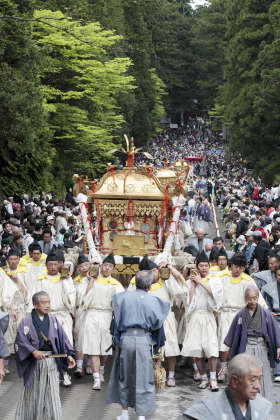

Tokugawa is enshrined in Nikko Toshogu as the deity Tosho Daigongen, or "Great Deity of the East Shining Light". Visitors to the temple can visit Tokugawa Ieyasu’s rather austere mausoleum, which is located up a hill in the woods behind the temple complex. Every year, the shrine holds the Shuki Taisai Grand Festival (in spring and autumn) with a procession of a thousand warriors to re-enact the arrival of Tokugawa's remains in Nikko.
Famous by design
Nikko Toshogu’s vibrant colours, countless flamboyant wood carvings, and large amounts of gold leaf decorate the buildings, deeming it unique even in Japan, standing in stark contrast to much of Japan's more spartan temple architecture.
Among the many notable buildings in Toshogu, the pretty five-story pagoda at the main entrance is most conspicuous because of its height. The main pillar hangs 10cm above ground, which is designed to combat the lengthening and shrinkage of the wood over time.
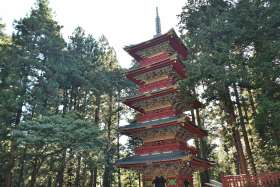
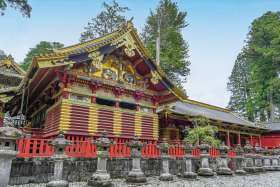
While all the temples in the compound are intricately decorated, the Honjido Hall is known for its “Crying Dragon” – a large dragon painting on the ceiling under which priests would clap pieces of wood to produce a bright ringing sound.
The most memorable elements of Toshogu are its elaborate wood carvings found on its temples and gates, representing masterpieces of Edo-period craftsmanship. Yomeimon Gate is perhaps Japan's most elaborated structure - covered with 508 detailed carvings of children and elders and mythical beasts.
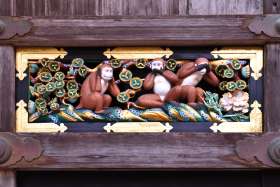
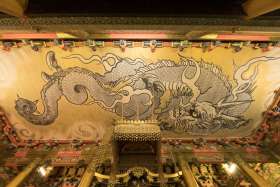
Near the main entrance, a group of storehouses greets visitors with its detailed wood carvings; the most famous ones by far are the ones of the Three Wise Monkeys, which encapsulate the mantra "see no evil, speak no evil, and hear no evil".


Another famous carving in Toshogu is the Nemurineko (sleeping cat), located on the transom of the Sakashitamon Gate. It is carved with two flying sparrows on its back, and the animals’ coexistence was said to symbolise a peaceful, unified Japan. Another memorable carving is the Sozo-no-zo ("Imagined Elephant") which was carved by an artist who had never seen one.
Beyond Toshogu
Just outside the paid shrine area is the modern Nikko Toshogu Museum (Homotsukan) which was built to commemorate the 400 year anniversary of Tokugawa Ieyasu's death, and displays an impressive collection of Tokugawa’s personal effects.
Within walking distance of Toshogu are two other World Heritage sites worth visiting: the Futarasan-jinja Shrine, an 8th century shrine dedicated to one of Nikko's mountain gods, and Rinnoji Temple which is famous for its elaborate, gold-lacquered Buddha statues.
Nikko Toshogu Shrine
Address: 2301 Sannai, Nikko, Tochigi 321-1431
Access: 15 minutes by bus from Nikko Station or Tobu Nikko Station
Operating hours: 9am to 5pm (until 4pm from November to March)
Admission: 1,300 yen (shrine); 1,000 yen (museum); 2,100 yen (shrine and museum)
Website: (toshogu.jp)

























































